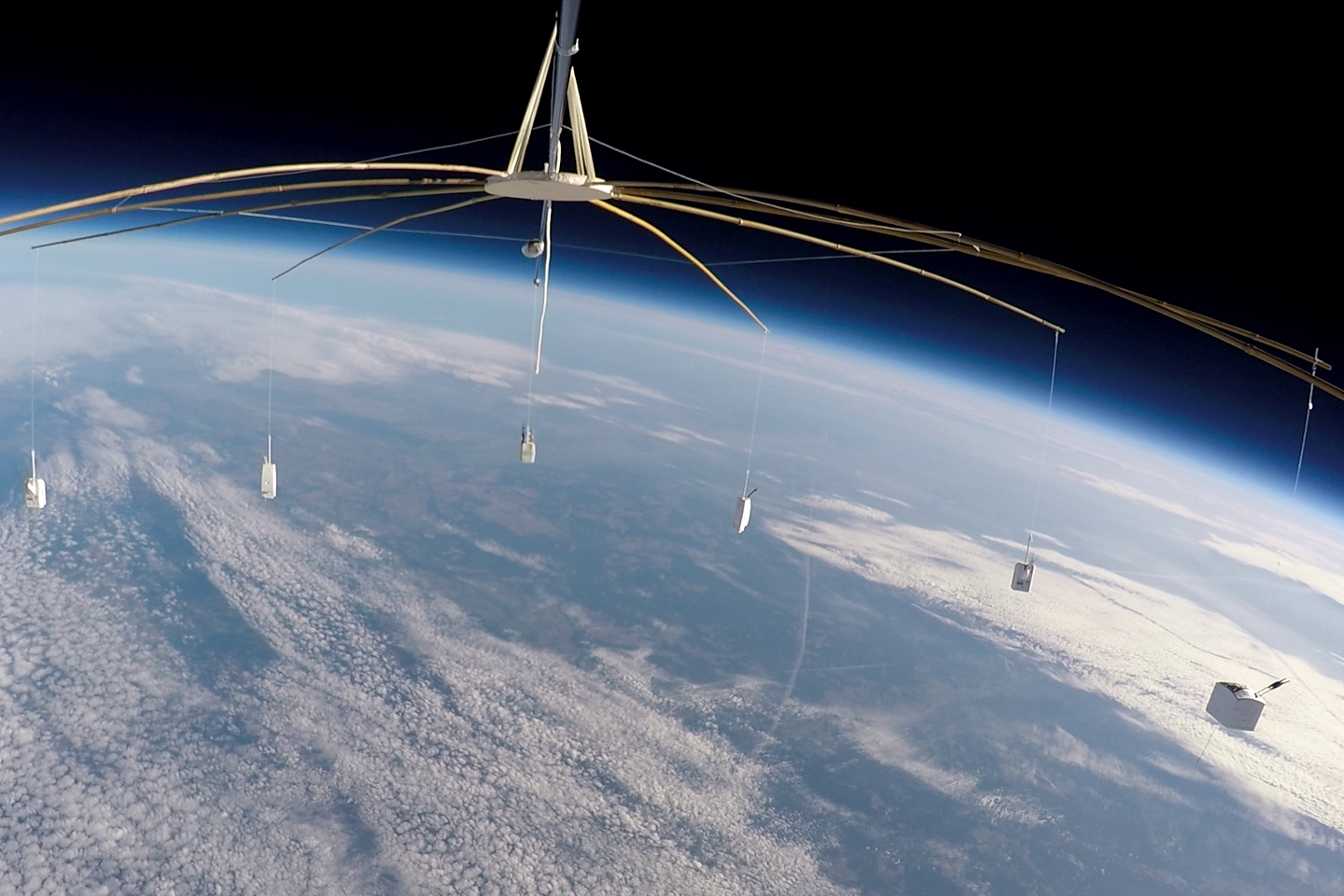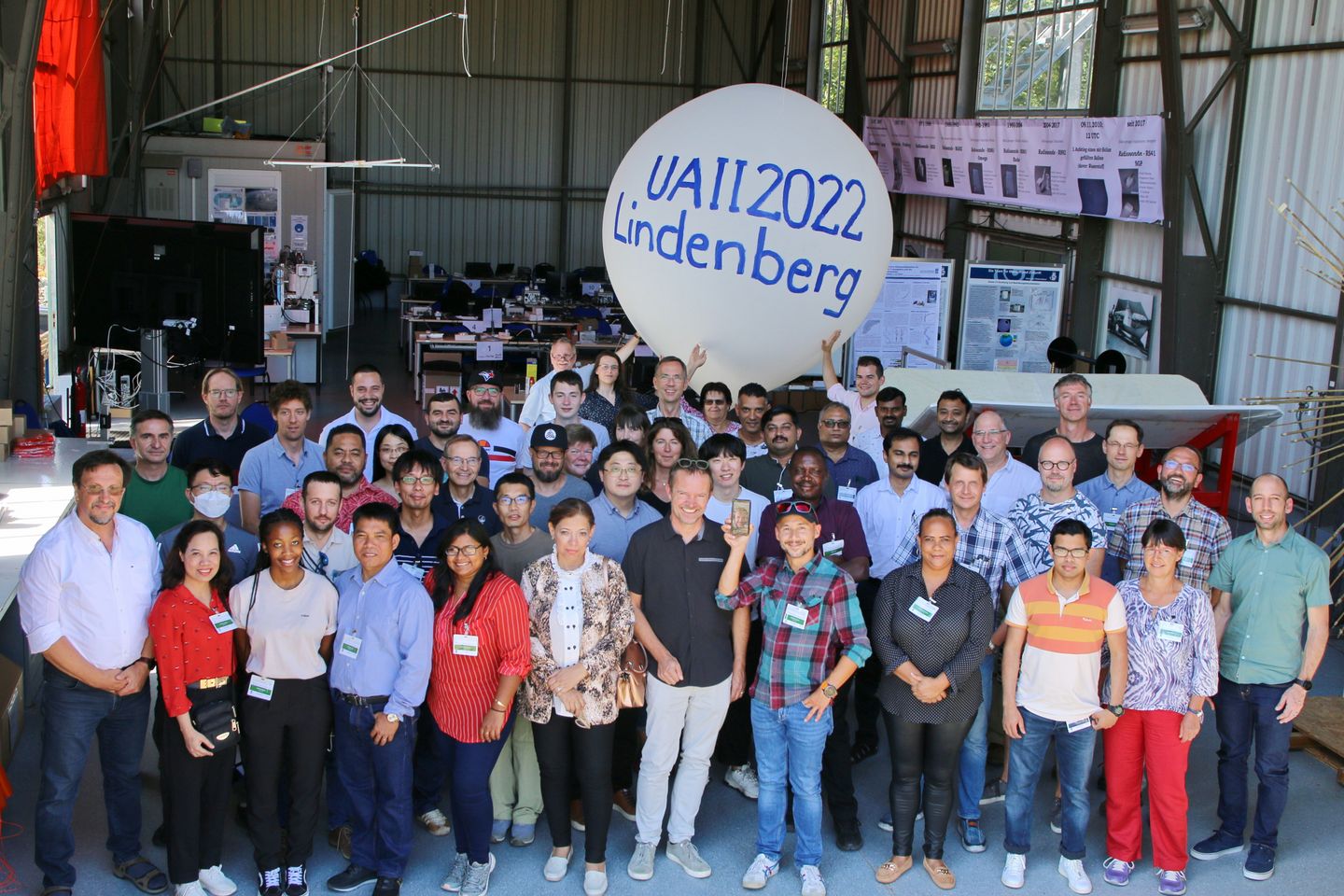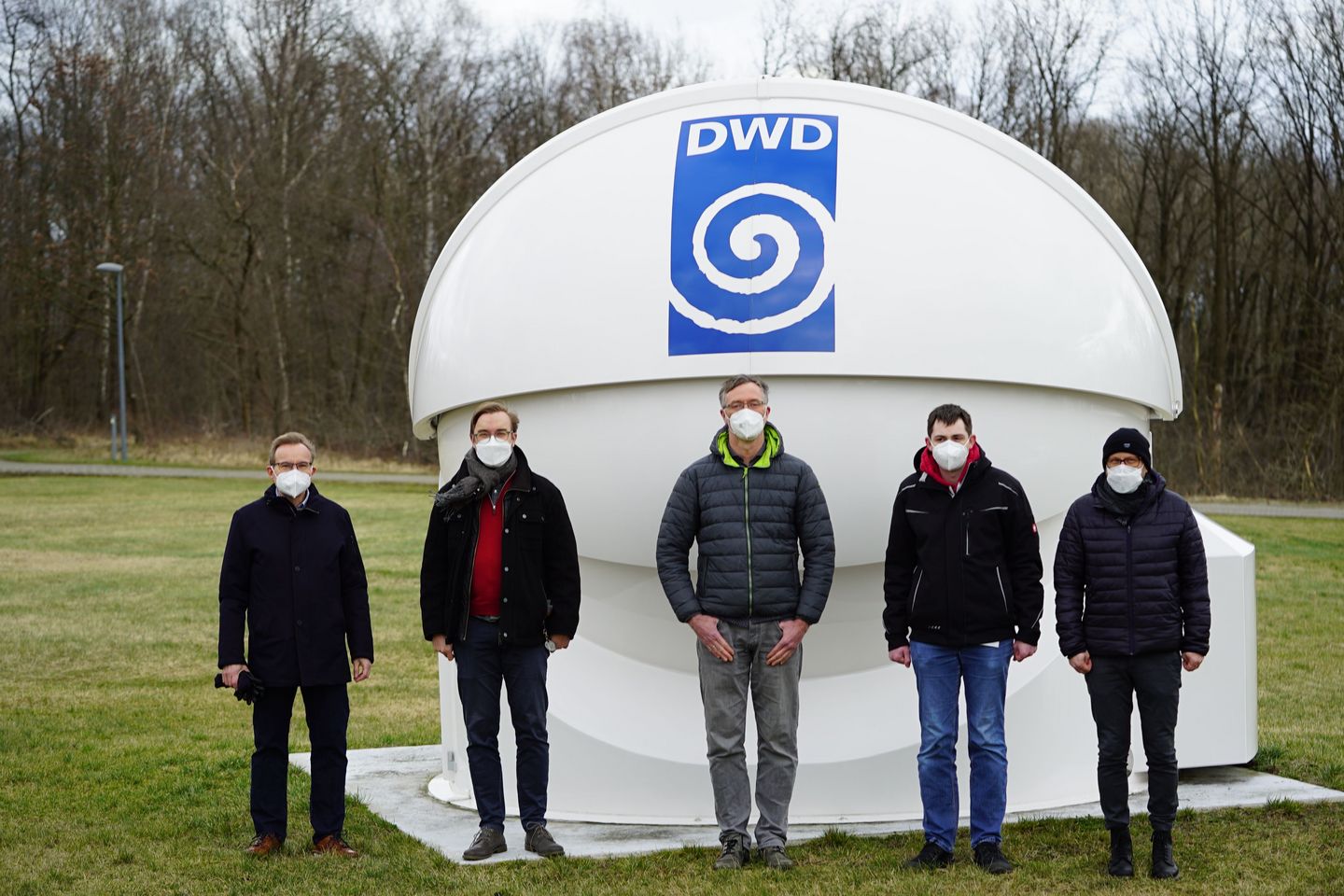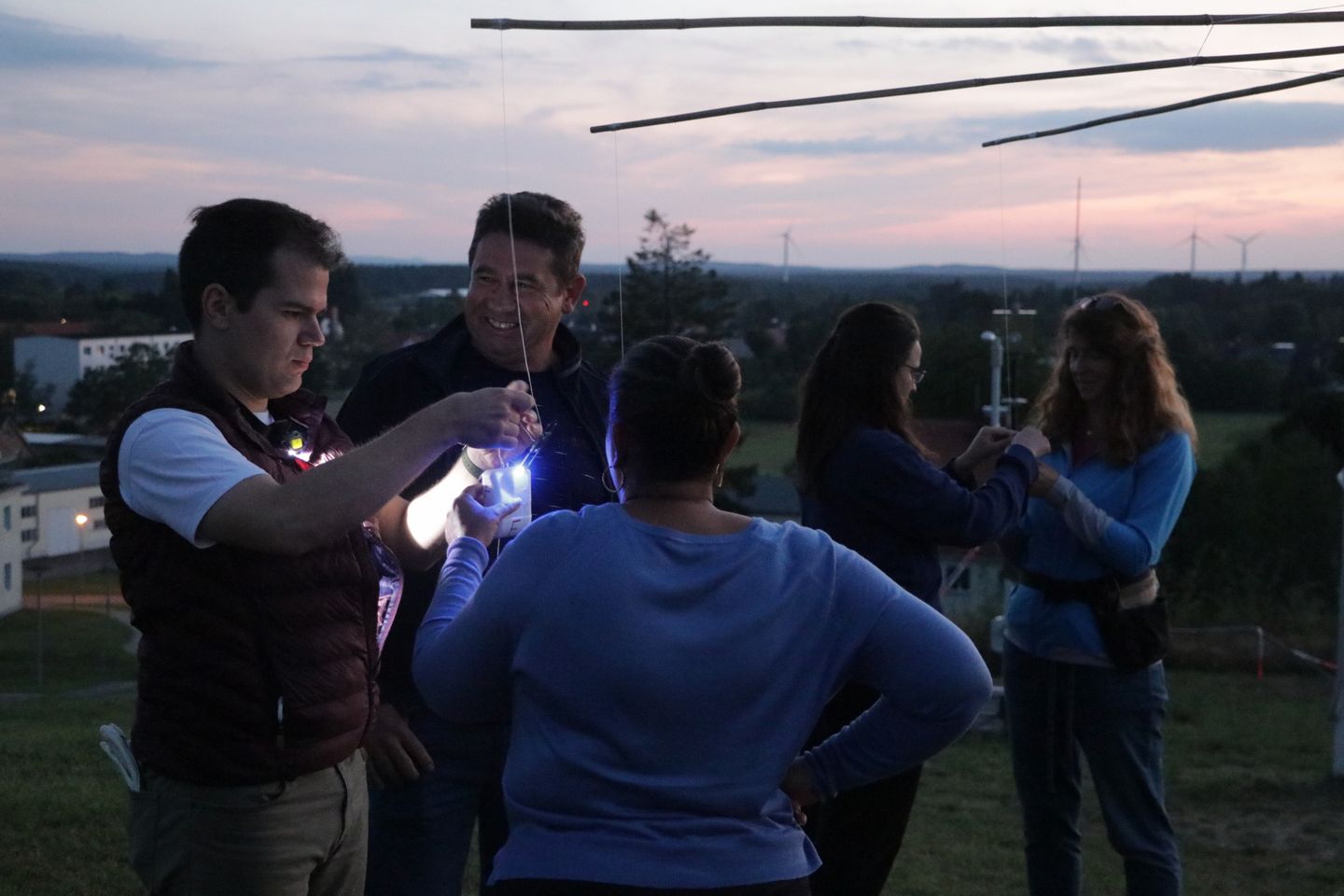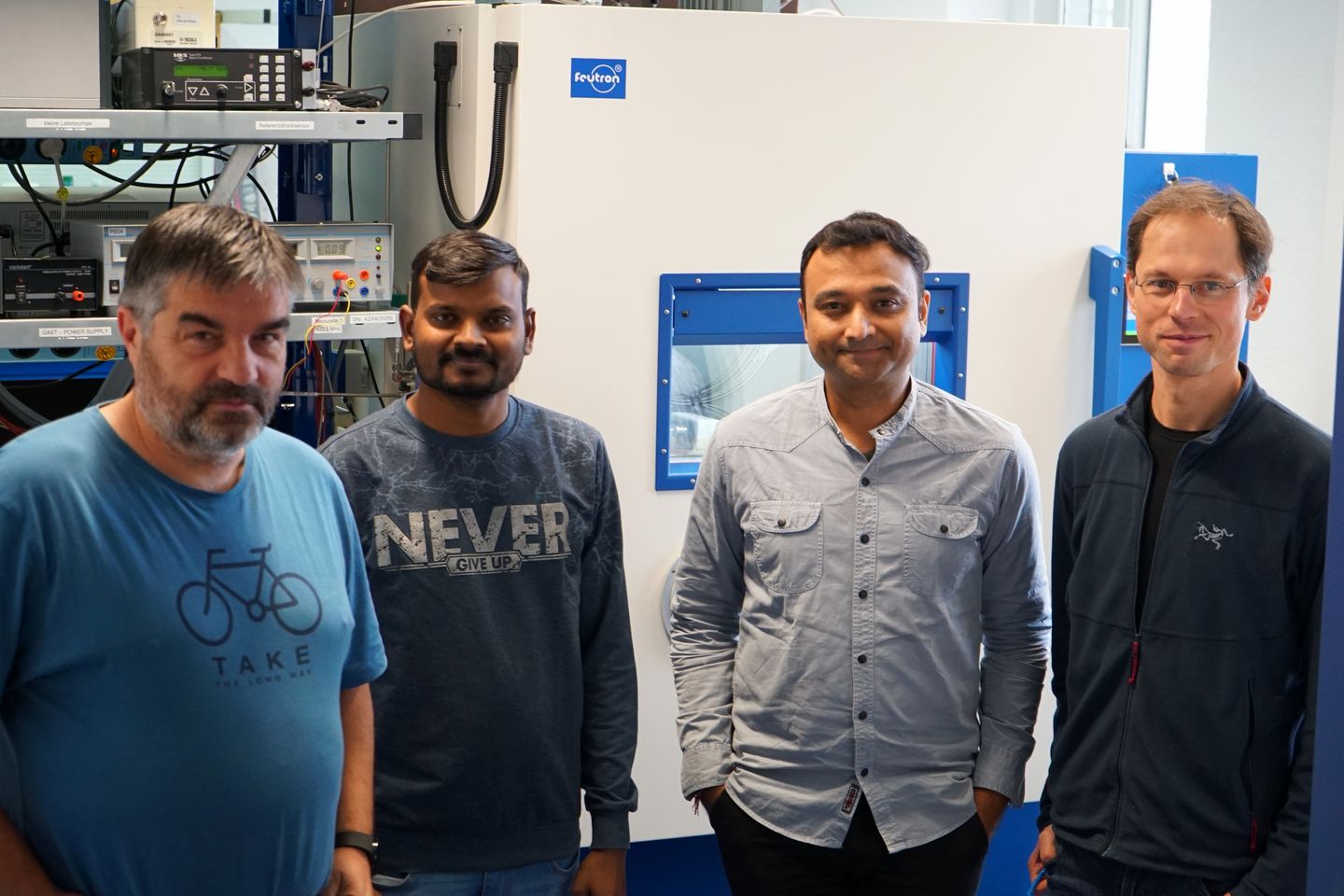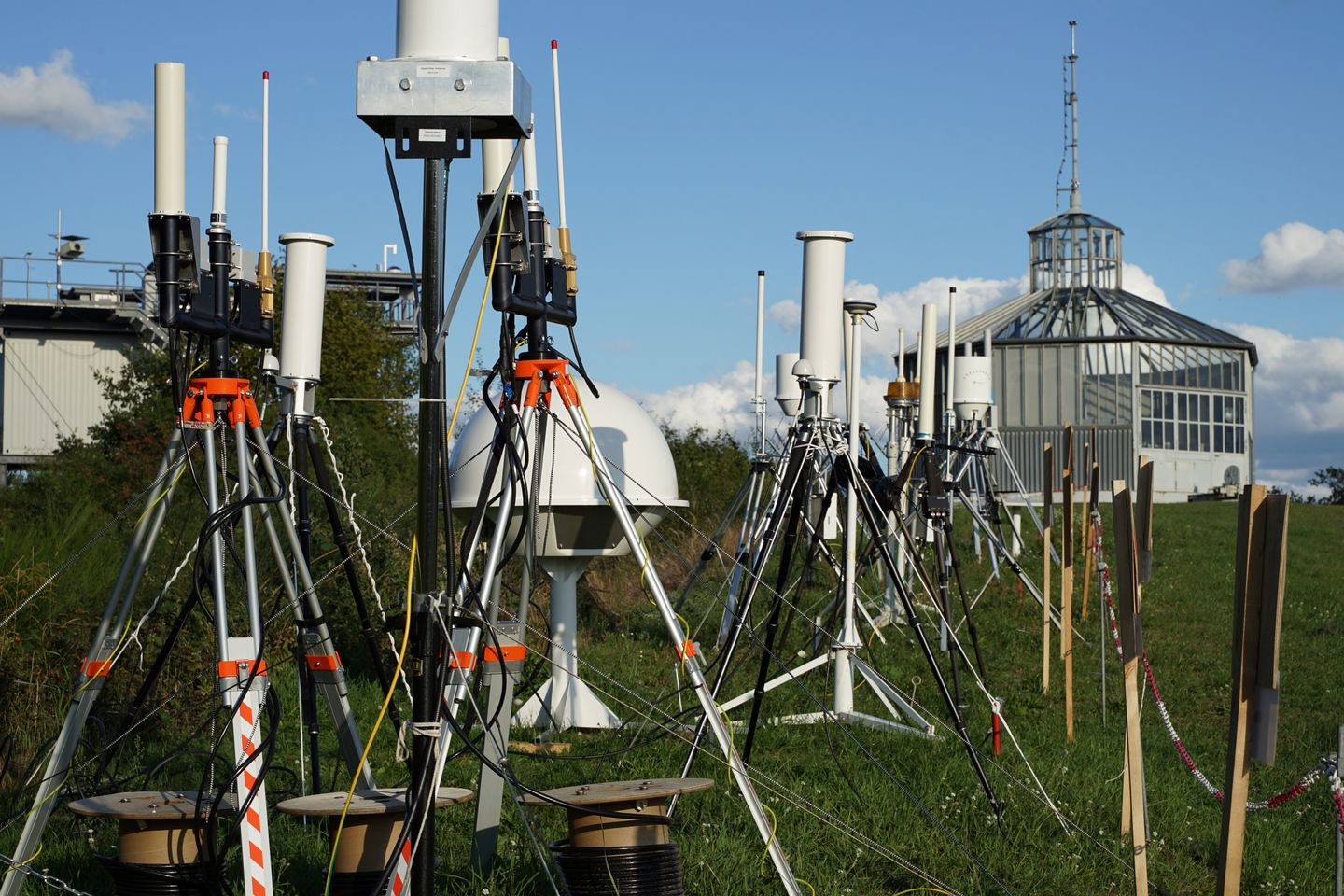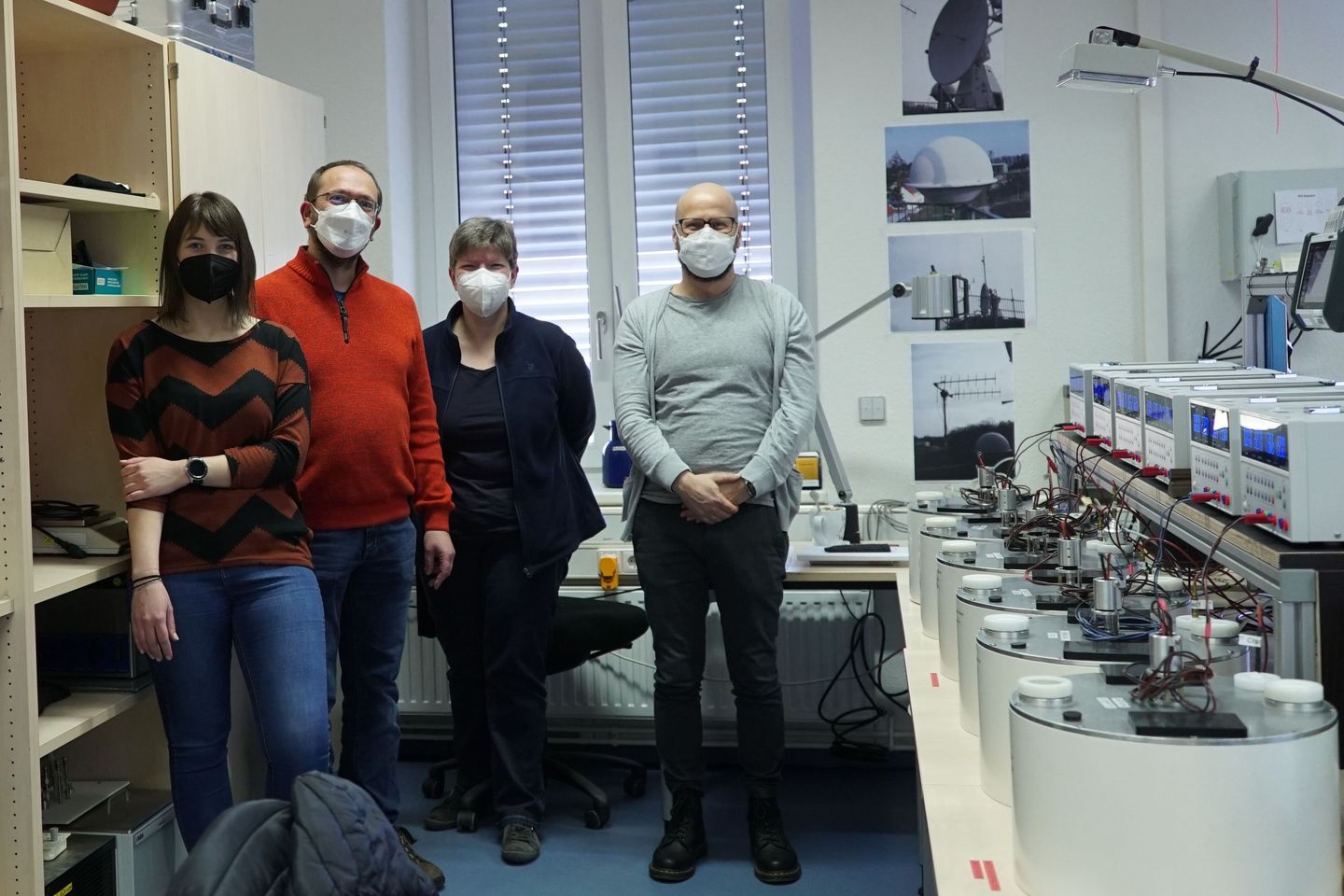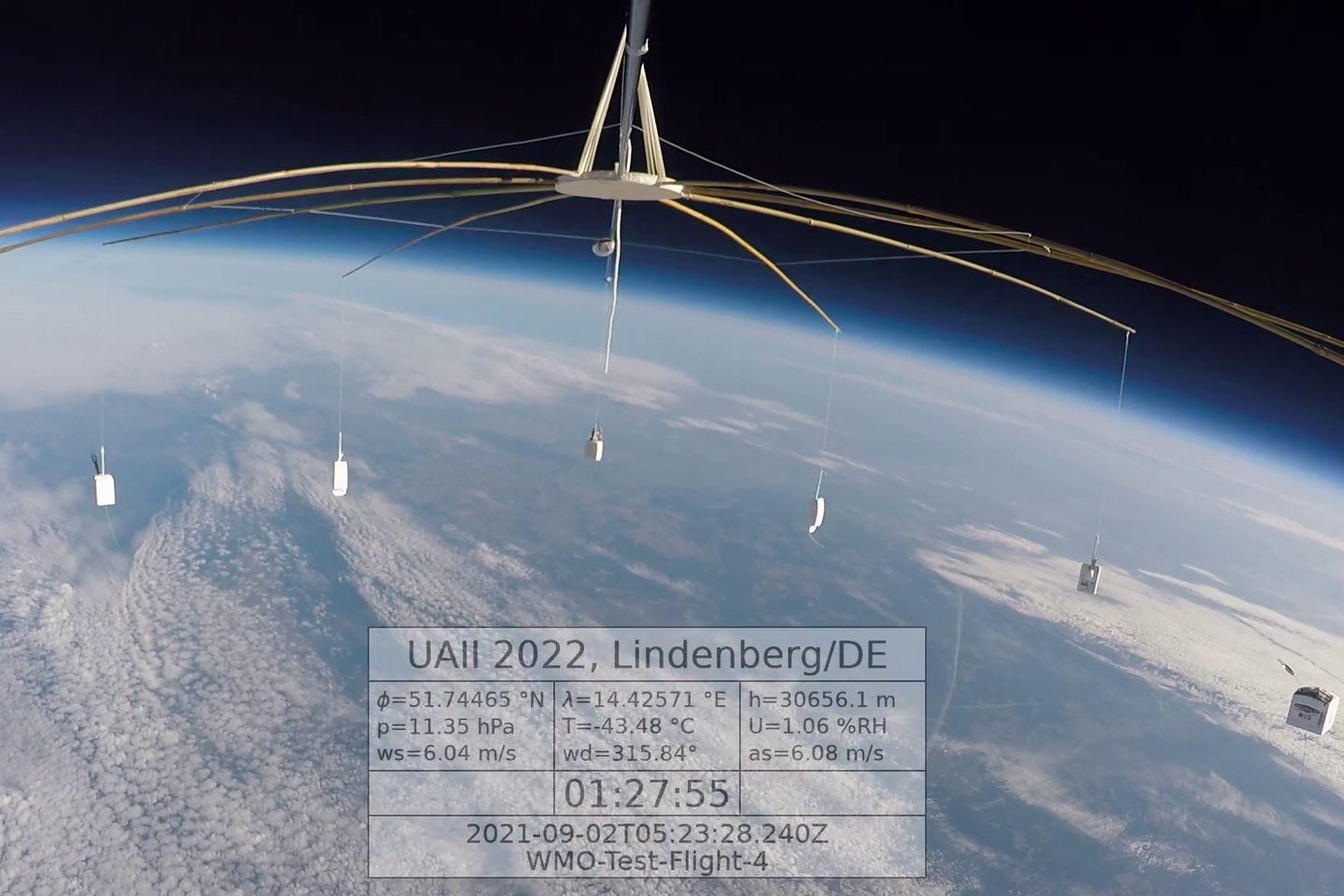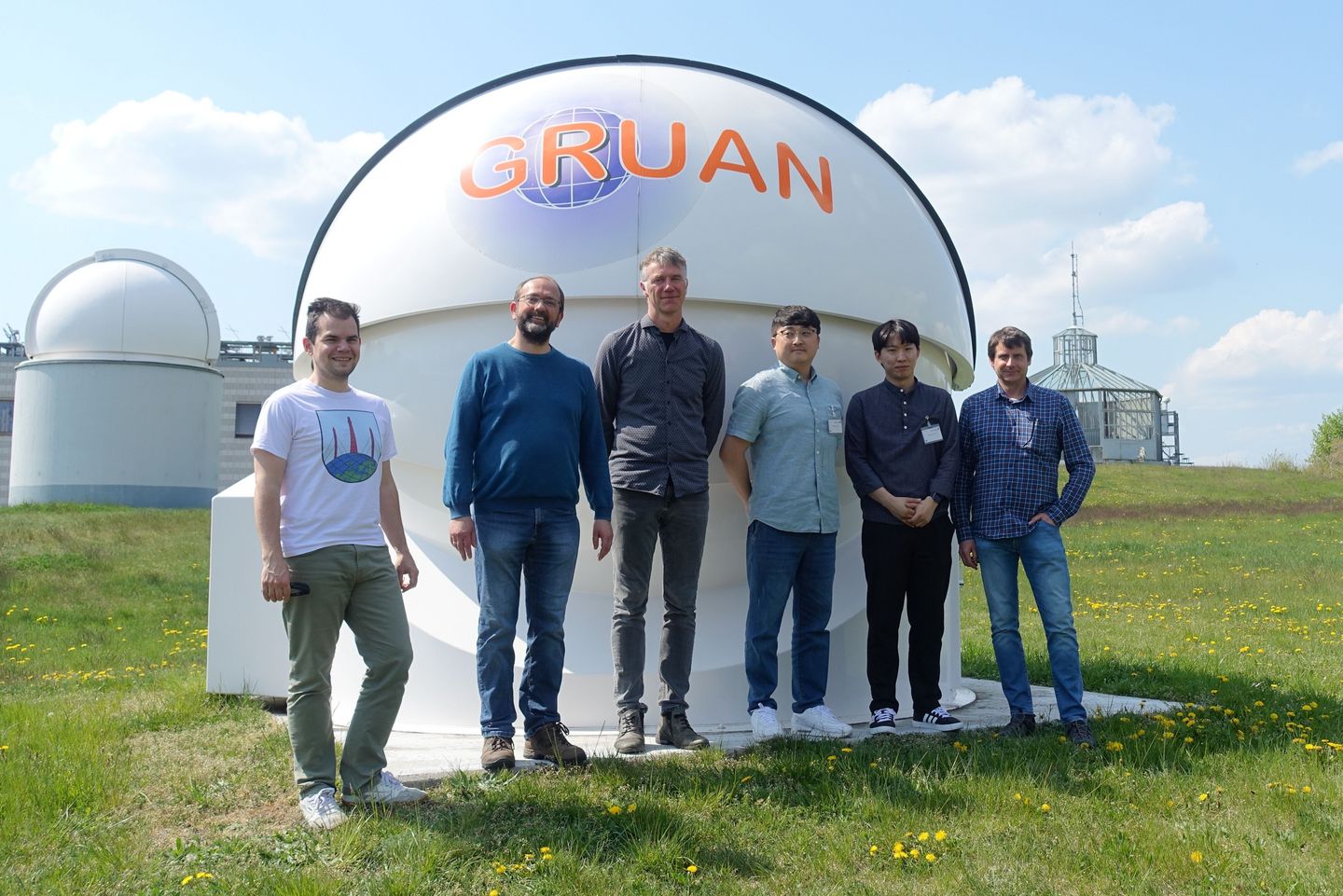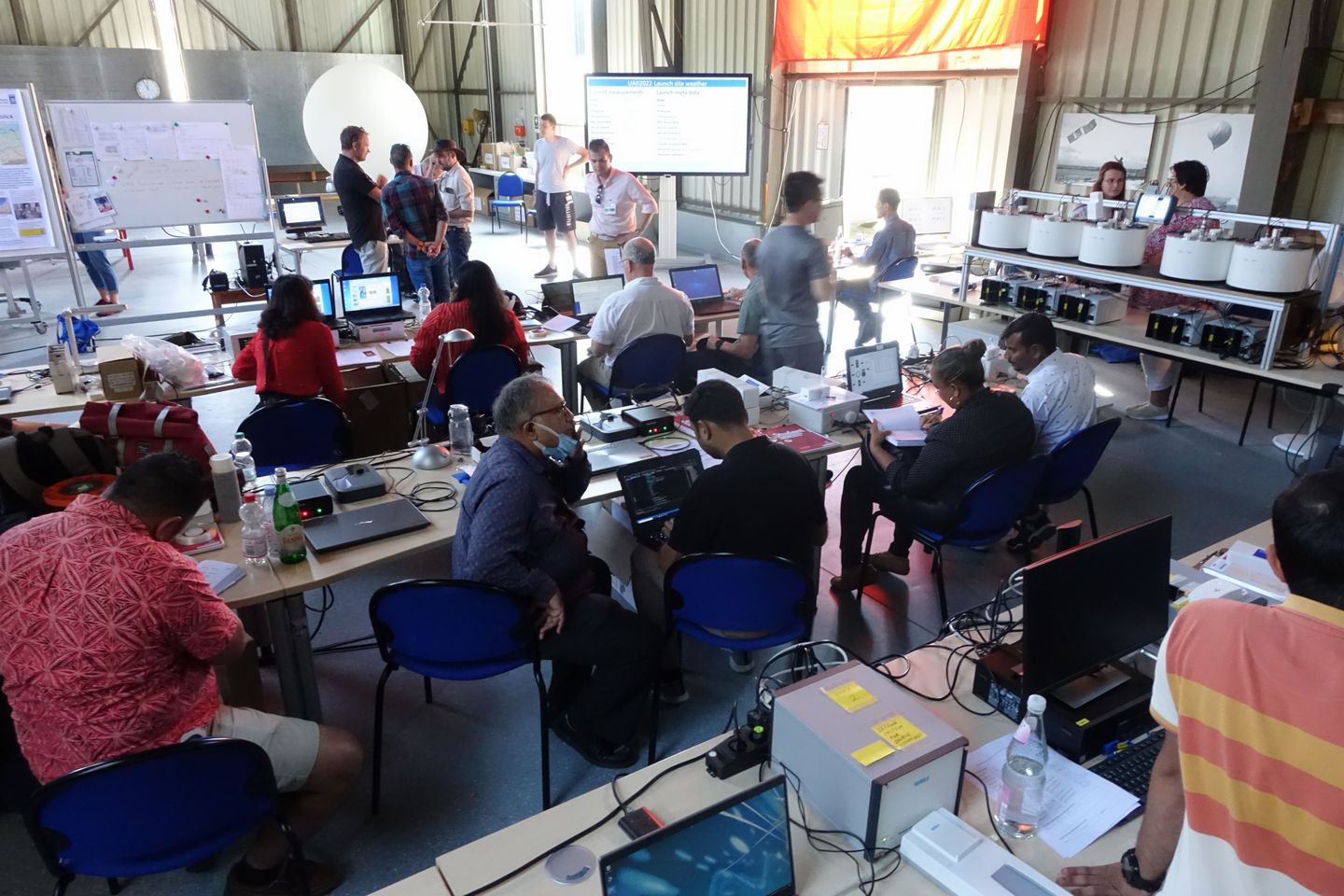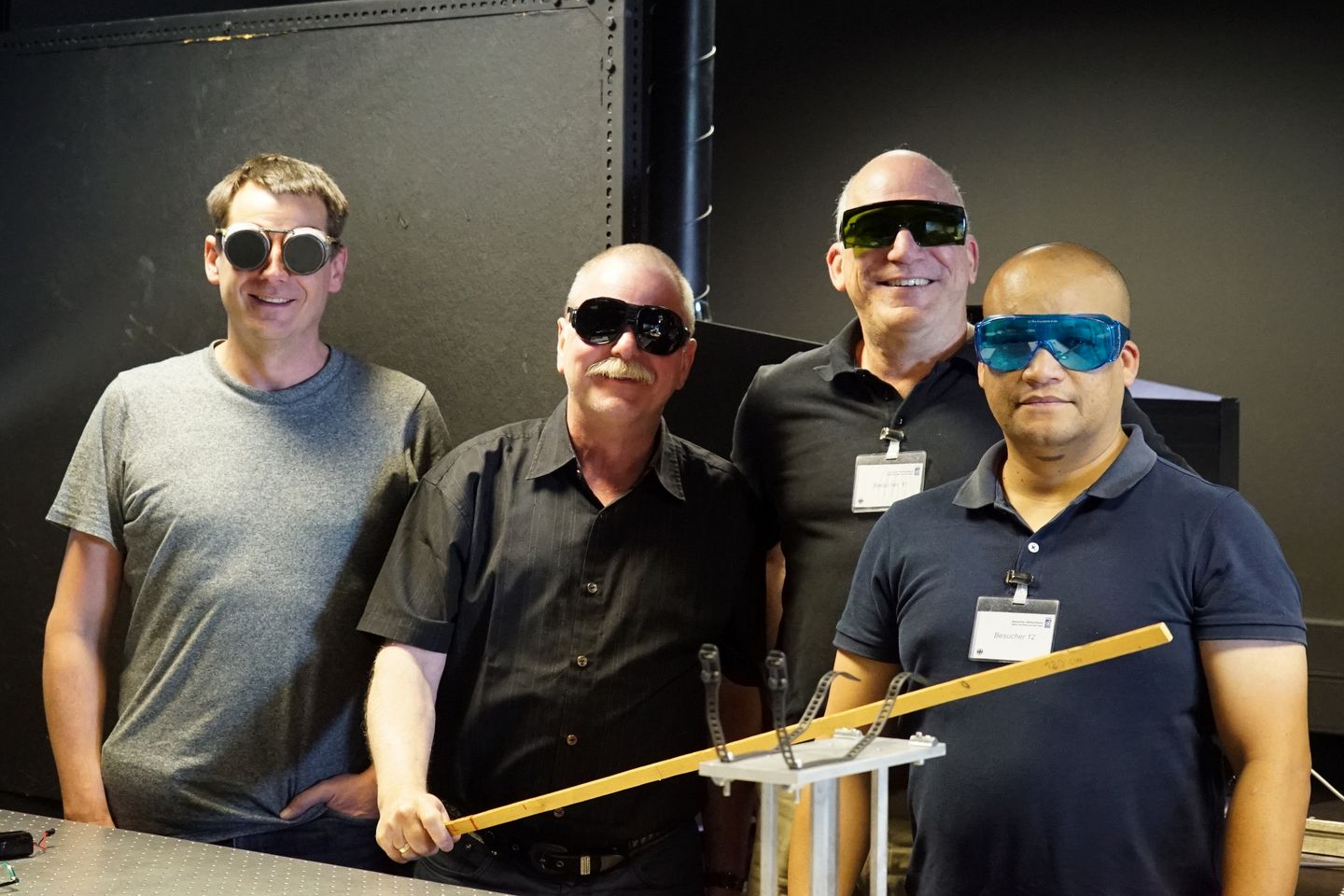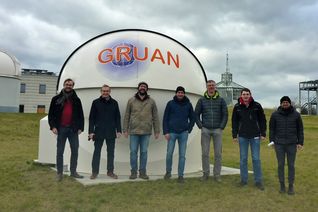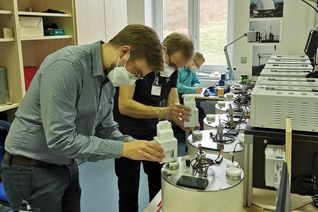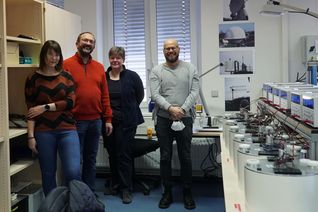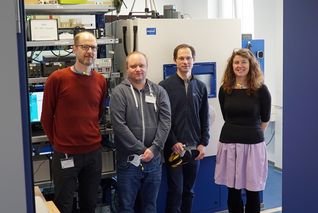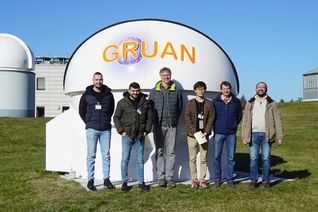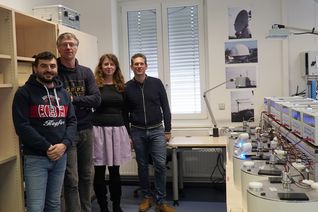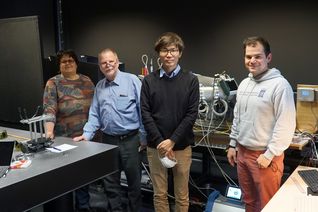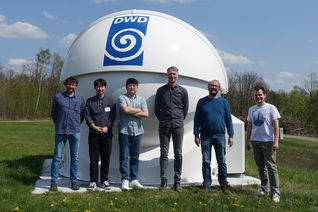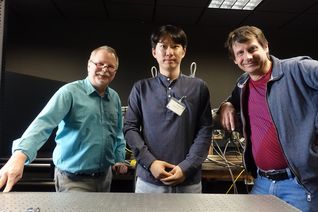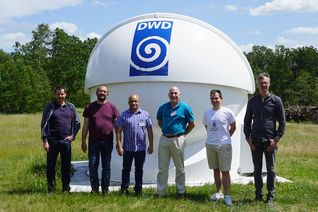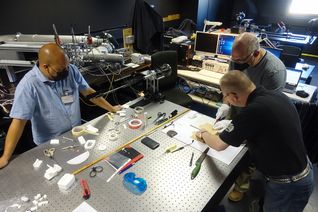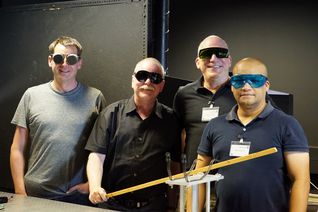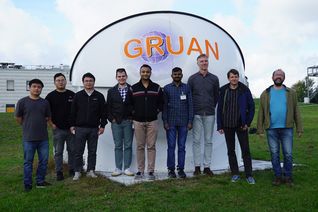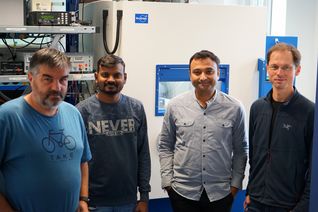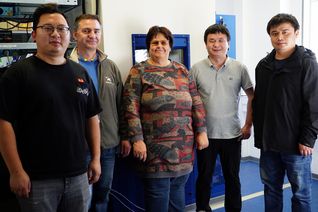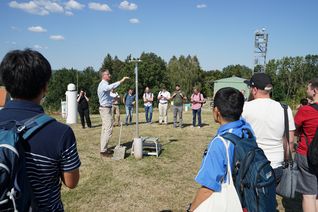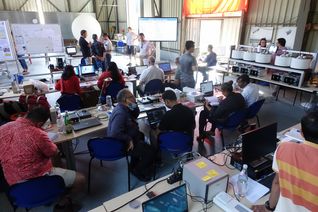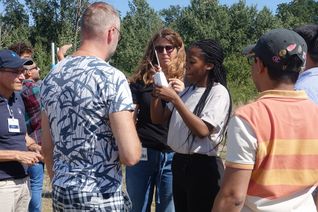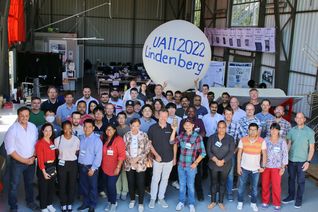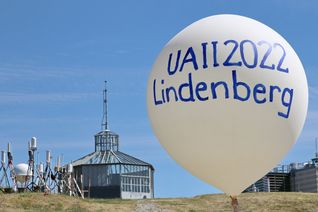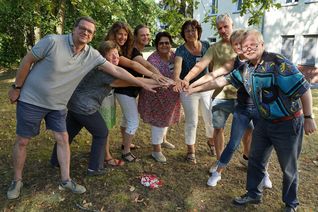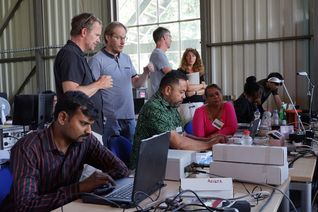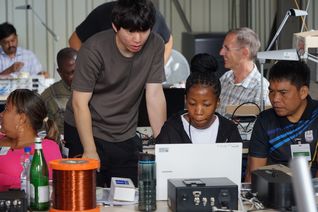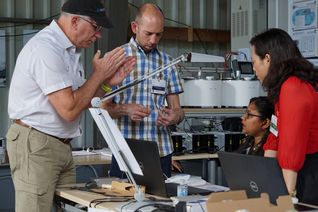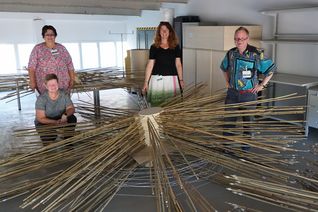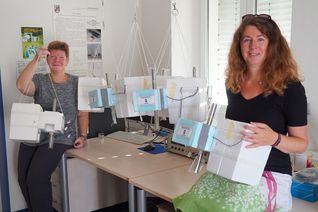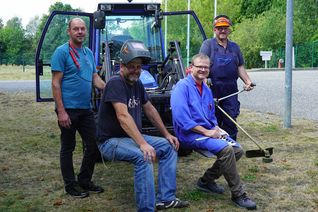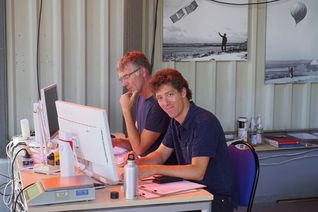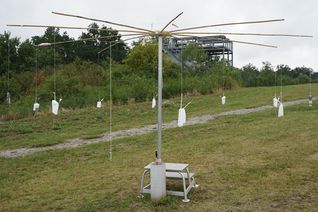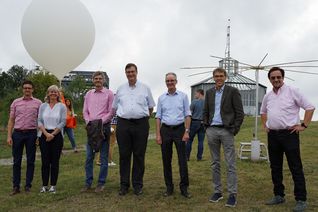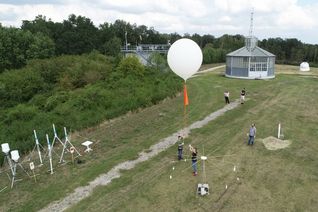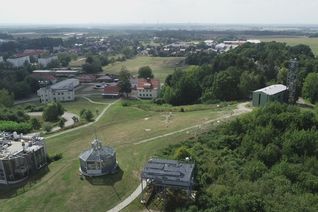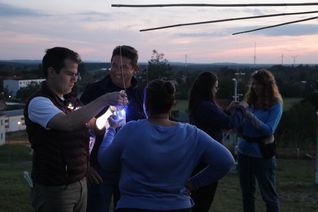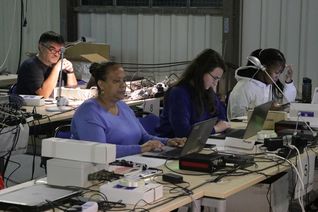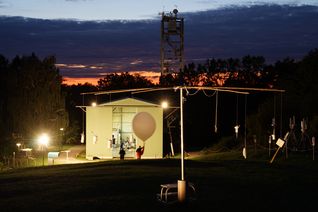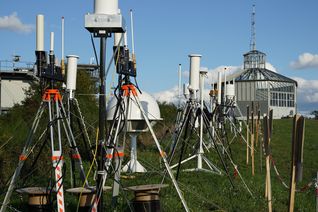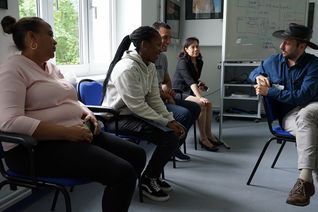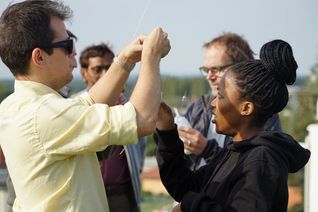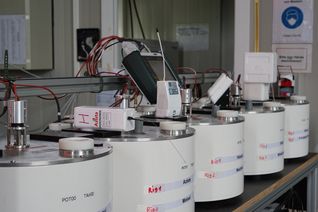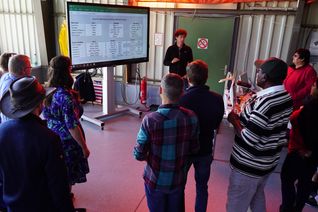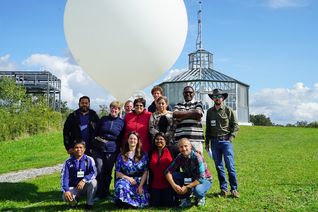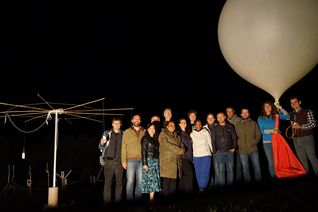
GCOS Reference Upper-Air Network
WMO 2022 Upper-Air Instrument Intercomparison Campaign
UAII2022
Results published
IOM-143: Instruments and Observing Methods Report No. 143 Ruud Dirksen, Alexander Haefele, Frédéric P.A. Vogt, Michael Sommer, Christoph von Rohden, Giovanni Martucci, Gonzague Romanens, Christian Felix, Luca Modolo, Holger Vömel, Tzvetan Simeonov, Peter Oelsner, David Edwards, Tim Oakley, Tom Gardiner, Mohd. Imran Ansari; Report of WMO’s 2022 Upper-Air Instrument Intercomparison Campaign, Lindenberg/ Germany, February 2022 - January 2023.
Please have also a look here.
Laboratory campaign of UAII2022
February 2022 to January 2023
The laboratory measurements in February 2022 marked the official start of the UAII2022 campaign, which is composed of laboratory tests of the participating radiosondes that take place before and after the field campaign phase that took place August-September 2022 . Against the background of the ever-present Covid-19 situation, which led to several postponements in the past, the campaign commenced successfully, and the laboratory tests were executed smoothly and according to plan. The laboratory tests yielded useful information and new insights on the performance of the radiosondes under various conditions. The findings will be presented in detail in the final report.
During the first slot in the laboratory part of the campaign (21 February to 4 March), a delegation from Vaisala, Finland (Hannu Jauhiainen, Petteri Survo, Johannes Saarinen, Lauri Keskinen) was present in Lindenberg for testing the RS41 radiosonde, in parallel to members from Graw, Germany (Alexander Kotik, Yvonne Panzer, Johannes Frielingsdorf) for tests with the DFM-17. During the second slot (28 March till 7 April), measurements were done with the radiosondes M20 of MeteoModem, France (Benjamin Finot, Antoine Farah, Samuel Mesmin) and the iMS-100 of Meisei, Japan (Takuji Sugidachi). Tests for the WxR-301D radiosonde of Weathex, South Korea (Jaewon So and Uijin Jeong) were performed in the third laboratory phase (2 to 13 May), and in the last slot before the field campaign (13 to 24 June), the iMet-54 of InterMet, South Africa was investigated (Shaun Wentzel and Andrew Spencer). Less then two weeks after the conclusion of the field campaign, we continued with the fifth slot (26 September to 7 October) to test the CF-06-AH of Aerospace Newsky, China (Huang Xiaojie, Jianqiao Hu, Melin Kuai) and the ATMS-3710 of Azista, India (Niraj Shah and Narendra Solanki). During the sixth slot (7 to 18 November) Ms J. Girija and Potnuru Srinivas from India came to Lindenberg to test the VSSC PS-B3. Due to the Covid-19 restrictions in China, an additional, final, slot was scheduled 16 to 27 January 2023 to facilitate the laboratory tests of the Tianjin Huayuntianyi GTH3 in cooperation with Ms Xu Jie and Chen Wanzhen.
During the laboratory campaign a dedicated series of test measurements was performed to provide information on the most relevant measurement errors and uncertainties of the radiosonde's temperature and humidity sensors. The test measurements focus on three topics:
- uncertainty of the calibration of the temperature and humidity sensors at room temperature,
- solar radiation error of the temperature measurement, and
- time lag of the humidity sensor at low temperatures.
Field campaign of UAII2022
August & September 2022
The field campaign of UAII2022 was successfully executed between 8 August and 13 September. In this period, more than 80 balloons were launched, resulting in at least 16 nighttime and 18 daytime flights for each participant, so that the objectives for the campaign were fulfilled.
After several months of preparations by the campaign team, the manufactures arrived at Lindenberg observatory on 8 August to set up of their systems for the campaign. Some had already participated in the laboratory campaign, others were first arrivals. In the meantime, 9 independent operators, who were recruited from various WMO member states around the world (Egypt, Fiji, Philipines, Seychelles, Simbabwe, South Africa, Trinidad & Tobago, Tunesia, Vietnam) had arrived in Lindenberg. On 9 August the training of the operators, supplemented with staff from Lindenberg and Payerne, commenced, where each operator was trained to operate two systems with which he/she had no prior experience. For each manufacturer, a 2-day training program was performed, consisting of a theoretical part, and a hands on training during which the complete process of radiosonde preparation, launch and data collection was put into practice. The trainingsessions were performed in 5 parallel classes, and the whole training program, including two test launches with the large campaign rig as well as an additional session, lasted until Monday 15 August. During this initial phase, nearly 60 people involved in the campaign were on site.
The training was formally concluded with the unanimous go-ahead of the manufacturers on the evening of 15 August, after which the manufacturers left the premises and campaign was ready to start the next day. The first official balloonsounding of the campaign was released at 10:18 local time in the morning of 16 August.
Soon, a steady routine including day and night shifts was established, where two rigs were launched during the day and another two during the night. The campaign rigs, made of bamboo and plywood, had place for 10 radiosondes. In practice the rig configuration was 5 participant's radiosondes, 2 GDP reference radiosondes (Vaisala RS41-SGP and Meisei iMS-100), and one or two additional radiosondes to investigate reproducibility. In this fashion two rigs were needed to perform one sounding for all participants, with the GDP radiosondes providing the common working standard, or transfer, between the individual rigs.
The radiosounding campaign was concluded with the last balloon launch on the evening of 13 September, at 23:07 LT. In this large collaborative effort of the operators, staff from Lindenberg and Payerne, and with the occasional backup support from the manufacturers, 79 campaign rigs were launchd in 4.5 weeks time, as well as 4 reference soundings with the CFH.
The weather conditions during the campaign were variable but favourable, so that the soundings were performed in a wide range of meteorological conditions. At the beginning we experienced high summer with heat-wave like temperatures well above 30 °C, but by the end of the campaign fall had announced itself and temperatures had dropped to 20 °C (around 13 °C at night). It was sunny most of the time, but there were several cloudy and rainy days as well, including a short but powerful thunderstorm accompanied by hail, which was much to the delight of some of the operators, who hadn't experienced this for of precipitation before. Surface winds were always moderate enough to allow launch with 60 m rope or with an unwinder. Unfavourable high level winds, with trajectories going into the Berlin area, caused a two-day interruption of campaign activities on 25-26 August.
With the support of the active community of radiosonde hunters in the area around Lindenberg, many of the rigs were recovered and removed from the environment. One member of the campaign team was assigned full-time to validating and analysing the data as they came in. This allowed to hold daily briefings with preliminary data analysis focusing on interesting effects observed in the data. This provided a positive feedback to the effort of the campaign team and operators, which was greatly appreciated by all. Further and more in-depth analsysis is now ongoing but in accordance with the campaign's data policy, the results of this analysis will remain undisclosed until publication of the report.
Brief description of campaign
Introduction and background of the campaign
WMO radiosonde intercomparison campaigns are organized for the purpose of getting an overview of the performance of the various operational radiosounding systems that are currently available. Such campaigns provide important information to national meteorological services (NMHS), who partially base the selection of an operational radiosounding system for their network on the outcome of these campaigns. Furthermore, these campaigns improve the quality and cost-effectiveness of upper air observing systems by providing recommendations on system performances, improvements of instruments and methods of observation and suitable working references, to WMO Members and instrument manufacturers.
One of the first WMO-CIMO radiosonde intercomparison campaign took place in 1984, and subsequent campaigns were organized approximately every 5-years. During the long pause since the previous intercomparison campaign, organized 2010 in Yangjiang (China), many manufacturers have introduced new radiosonde models. The current campaign, dubbed Upper Air Instrument Intercomparison (UAII2022), is to evaluate these new developments. It is one of the objective of UAII2022 to bring the major radiosonde manufacturers from all the different regions of the world together, in order to have a representative collection of the systems that are employed in the global observational radiosonde network. This successfully resulted in the participation of manufacturers from Europe, Japan, South Africa, China, India, Russia and Korea.
The UAII2022 campaign is co-hosted by Deutscher Wetterdienst (DWD) and Meteoswiss, and the radiosoundings will take place August-September 2022 at DWD's Lindenberg Meteorological Observatory near Berlin.
GRUAN synergy
The Lindenberg observatory also hosts the GRUAN Lead Centre, resulting in the synergetic adoption of GRUAN elements in the campaign. This means for instance, that a manufacturer-independent ground check in the standard humidity chamber (SHC) at 100 %RH is performed for each radiosonde prior to launch. Furthermore, the measurements errors uncertainties of the radiosonde's sensors are assessed under laboratory conditions, using the same setups that are used for the comprehensive characterisation that is performed for GRUAN data product development. Finally, the transfer reference profile, that is used to compare the sounding data from various rigs, is composed of three certified GRUAN Data products (GDPs), and each week there is a comparison between the GDP sondes and an independent reference formed by the cryogenic frostpoint hygrometer (CFH).
During the laboratory campaign a dedicated measurement program will be performed to provide information on the measurement errors and uncertainties of the radiosonde's temperature and humidity sensors. This program is a compacted version of the measurements that are performed to characterize the radiosonde as part of the GRUAN data product development. The measurement program is not intended to provide a complete characterisation of the radiosonde, but it will yield sufficient information on the sensor's errors and uncertainties to understand and interpret the results of the radiosonde intercomparison campaign, and to provide useful feedback to the manufacturers on the radiosonde's performance.
The results of the laboratory campaign will not be used for the assessment or ranking of the radiosonde systems in the campaign report, but the measurements will be used to understand and interpret the differences observed during the radiosounding campaign. As such, the laboratory campaign is to the mutual benefit to both the manufacturers, who will get information about the performance of their systems under controlled laboratory conditions, and to GRUAN, by getting acquainted with the operational radiosounding systems that are currently available.
Independent operators & capacity building
Another innovation of UAII2022 is that the radiosoundings are performed by independent operators, who are trained by the manufacturers in operating the sounding system prior to start of the radiosounding campaign. The motivation to employ independent operators is twofold: for one it enables transparent data-collection, which enhances the integrity of the comparison, and it allows to test the user-friendliness of the radiosounding systems. The operators are recruited from various WMO member states in the framework of capacity-building.
Extensive information on the goals, organisation and rules of UAII2022 are given in the campaign's project plan (WMO page), from which following excerpt was taken:
Goal of the campaign
The main objective of the radiosonde intercomparison campaign is to test the performance of operational radiosonde systems and to provide guidance on their performance relative to each other, as well as to evaluate the current capabilities of surface-based and space-based remote sensing instruments, and aircraft-based observations. Its results shall help NMHS in selecting observing systems according to their requirements and will allow them to evaluate the potential offered by remote sensing instruments to complement the in situ information provided by the radiosondes.
The primary goals of the campaign are:
- To test and evaluate as many operational radiosonde systems as possible at the same location and time.
- To characterize the individual radiosondes with respect to their reproducibility and to determine the uncertainty of the different measured parameters.
- To compare the different radiosonde systems to characterized reference systems employed in the GCOS Reference Upper Air Network (GRUAN).
- To characterize measurement errors and uncertainties of radiosonde sensors under laboratory conditions.
- To demonstrate the added-value of surface-based remote-sensing systems for upper-air measurements.
- To evaluate the capability of each system participating in the intercomparison to reach the uncertainty targets as defined in OSCAR
References & links
IOM-143: Instruments and Observing Methods Report No. 143; Ruud Dirksen, Alexander Haefele, Frédéric P.A. Vogt, Michael Sommer, Christoph von Rohden, Giovanni Martucci, Gonzague Romanens, Christian Felix, Luca Modolo, Holger Vömel, Tzvetan Simeonov, Peter Oelsner, David Edwards, Tim Oakley, Tom Gardiner, Mohd. Imran Ansari; Report of WMO’s 2022 Upper-Air Instrument Intercomparison Campaign, Lindenberg/ Germany, February 2022 - January 2023.
- von Rohden 2022: von Rohden, C., Sommer, M., Naebert, T., Motuz, V., and Dirksen, R. J.: Laboratory characterisation of the radiation temperature error of radiosondes and its application to the GRUAN data processing for the Vaisala RS41, Atmos. Meas. Tech., 15, 383–405, https://doi.org/10.5194/amt-15-383-2022, 2022.
